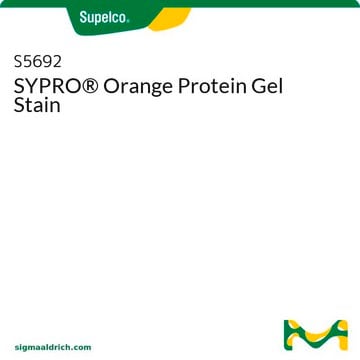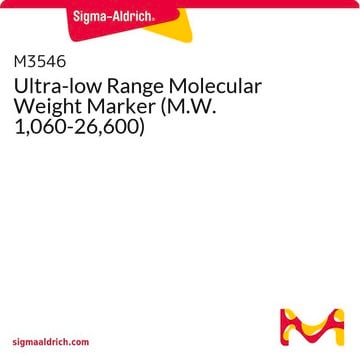G1041
EZBlue™ Gel Staining Reagent
Synonym(s):
protein gel stain, protein stain
About This Item
Recommended Products
technique(s)
protein staining: suitable
storage temp.
2-8°C
Related Categories
General description
Application
Features and Benefits
- Premixed solution eliminates the time and effort required to prepare the stain
- Increased sensitivity ensures that low abundance proteins can be detected (as little as 5 ng)
- Rapid reaction significantly reduces the amount of time required to stain and rinse
- No solvent waste so you save time and money by eliminating hazardous material disposal
Other Notes
Legal Information
signalword
Warning
hcodes
Hazard Classifications
Eye Irrit. 2 - Met. Corr. 1 - Skin Irrit. 2 - STOT SE 2
target_organs
Eyes,Central nervous system
Storage Class
8A - Combustible corrosive hazardous materials
wgk_germany
WGK 2
flash_point_f
Not applicable
flash_point_c
Not applicable
ppe
Faceshields, Gloves, Goggles, type ABEK (EN14387) respirator filter
Certificates of Analysis (COA)
Search for Certificates of Analysis (COA) by entering the products Lot/Batch Number. Lot and Batch Numbers can be found on a product’s label following the words ‘Lot’ or ‘Batch’.
Already Own This Product?
Find documentation for the products that you have recently purchased in the Document Library.
Customers Also Viewed
Articles
Cell lysis challenges and protein extraction variables for Western blot sensitivity and reproducibility.
The possible causes and potential remedies for challenges encountered in the immunoprecipitation-Western blot technique, which consists of cell lysis, formation of the antibody-antigen (immune) complex, precipitation of the immune complexes, and analysis by Western blotting.
PNGase Fast denaturing buffer and enzyme provide results similar to a conventional 20-hour protocol, reducing workflow time to about 1 hour.
Sigma offers EZBlue™ and ProteoSilver™ reagents for protein visualization, suitable for proteomics and traditional PAGE formats.
Protocols
Simplify your SDS-PAGE gel preparation with our pre-mixed solutions and protocols to achieve precise protein separation.
Our team of scientists has experience in all areas of research including Life Science, Material Science, Chemical Synthesis, Chromatography, Analytical and many others.
Contact Technical Service












